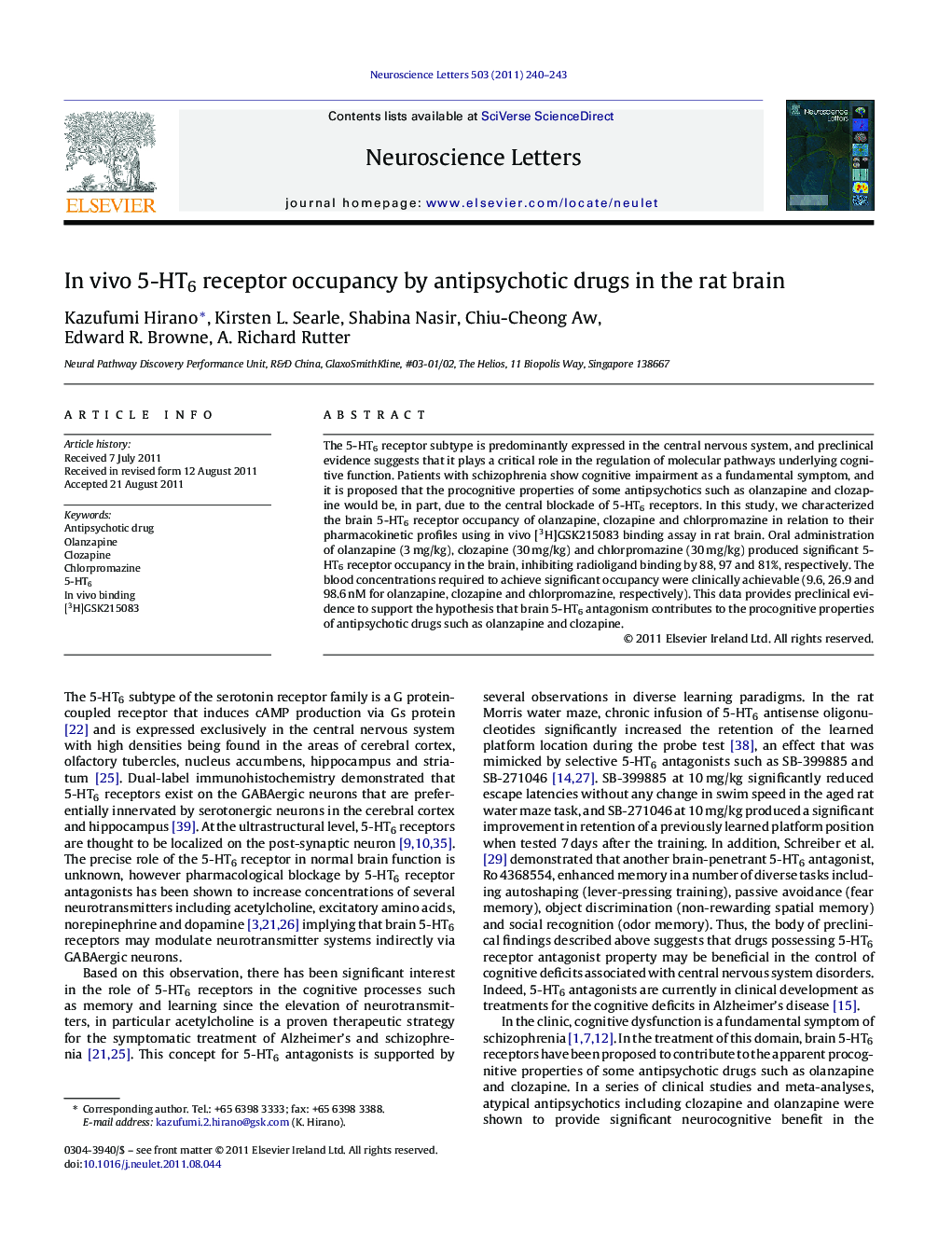| کد مقاله | کد نشریه | سال انتشار | مقاله انگلیسی | نسخه تمام متن |
|---|---|---|---|---|
| 4344906 | 1296692 | 2011 | 4 صفحه PDF | دانلود رایگان |

The 5-HT6 receptor subtype is predominantly expressed in the central nervous system, and preclinical evidence suggests that it plays a critical role in the regulation of molecular pathways underlying cognitive function. Patients with schizophrenia show cognitive impairment as a fundamental symptom, and it is proposed that the procognitive properties of some antipsychotics such as olanzapine and clozapine would be, in part, due to the central blockade of 5-HT6 receptors. In this study, we characterized the brain 5-HT6 receptor occupancy of olanzapine, clozapine and chlorpromazine in relation to their pharmacokinetic profiles using in vivo [3H]GSK215083 binding assay in rat brain. Oral administration of olanzapine (3 mg/kg), clozapine (30 mg/kg) and chlorpromazine (30 mg/kg) produced significant 5-HT6 receptor occupancy in the brain, inhibiting radioligand binding by 88, 97 and 81%, respectively. The blood concentrations required to achieve significant occupancy were clinically achievable (9.6, 26.9 and 98.6 nM for olanzapine, clozapine and chlorpromazine, respectively). This data provides preclinical evidence to support the hypothesis that brain 5-HT6 antagonism contributes to the procognitive properties of antipsychotic drugs such as olanzapine and clozapine.
► In vivo brain 5-HT6 receptor occupancy of antipsychotics was characterized.
► Olanzapine, clozapine and chlorpromazine produced significant 5-HT6 occupancy.
► The blood concentrations in rats were clinically achievable levels.
► This data supports the procognitive properties of antipsychotic drugs via 5-HT6.
Journal: Neuroscience Letters - Volume 503, Issue 3, 10 October 2011, Pages 240–243